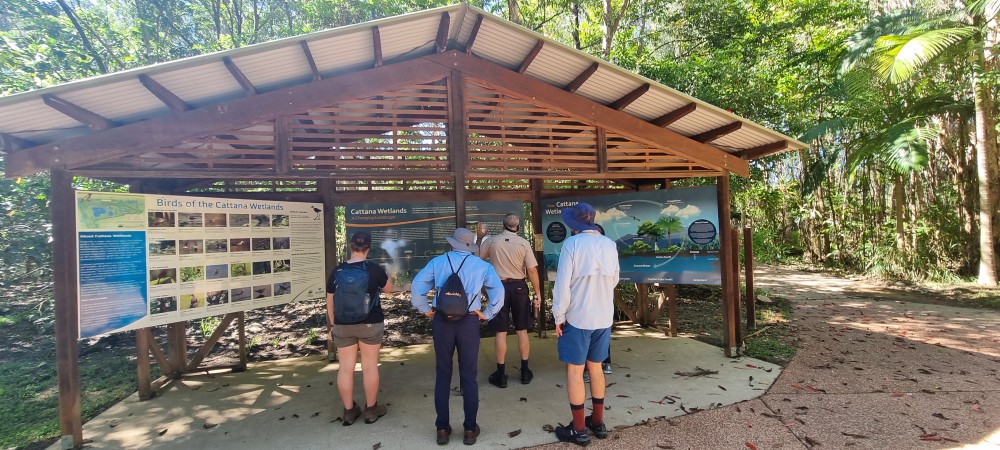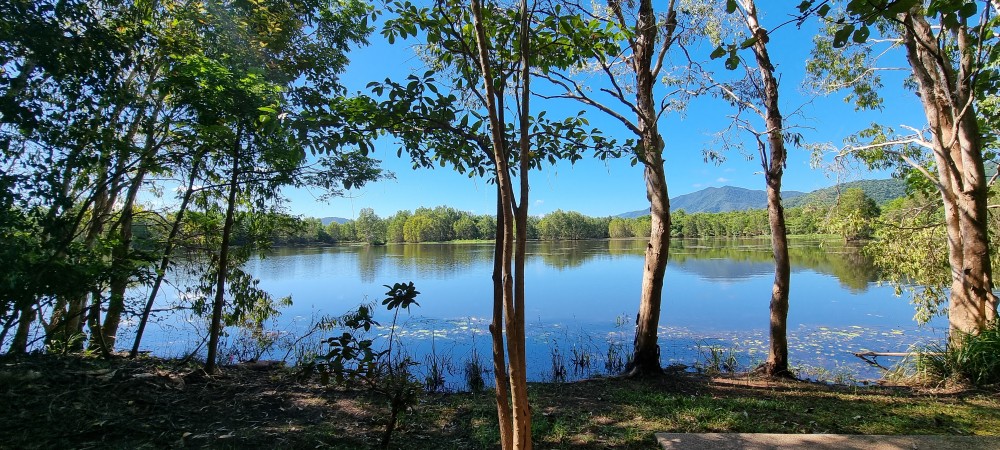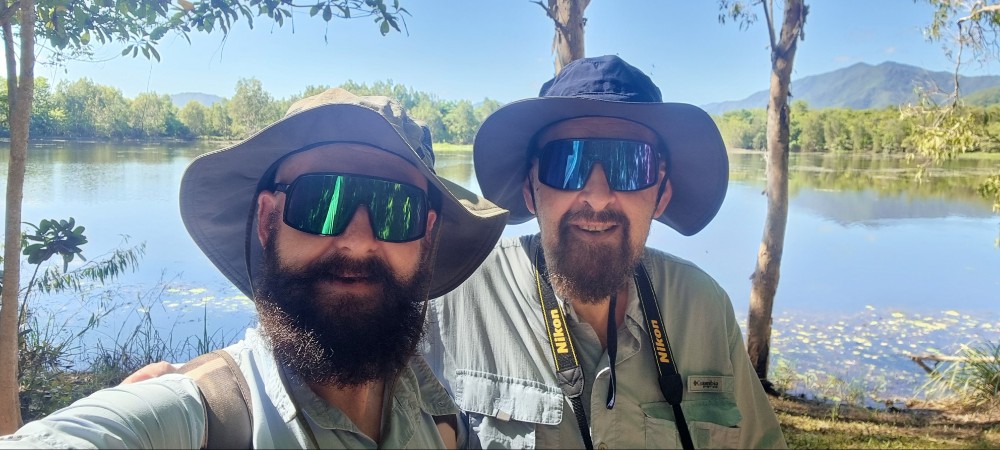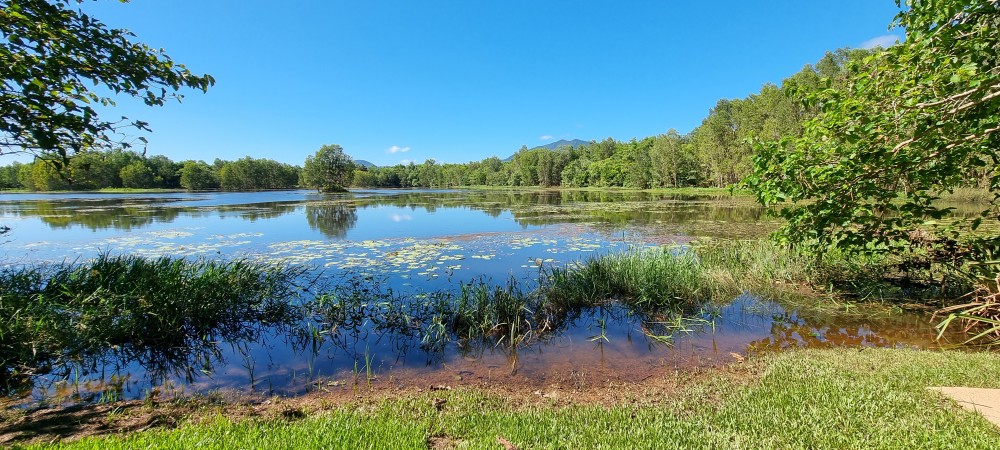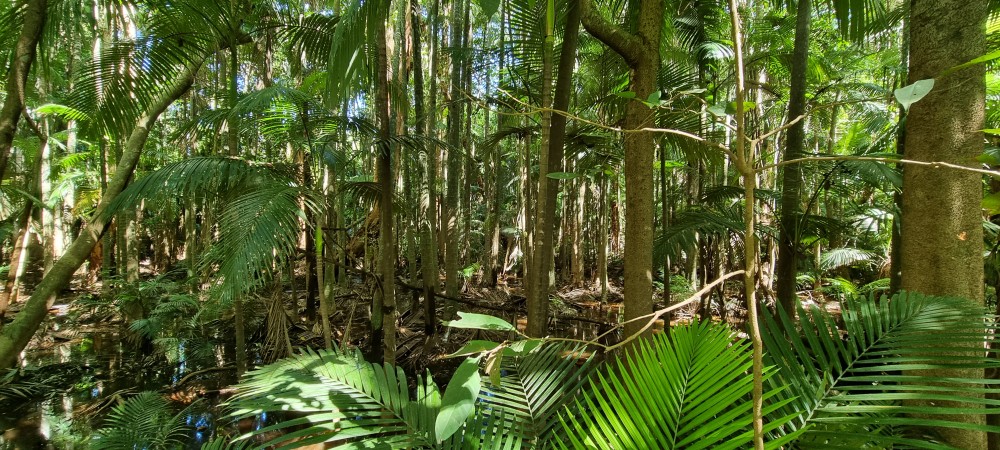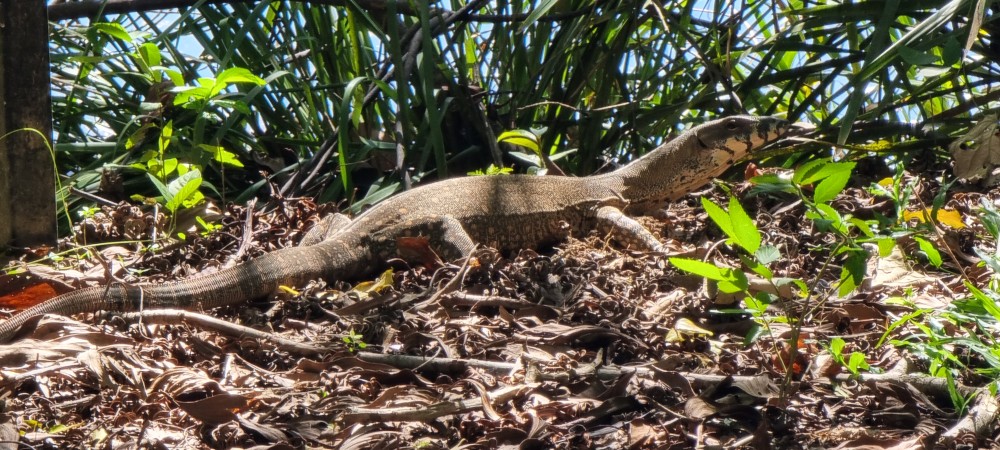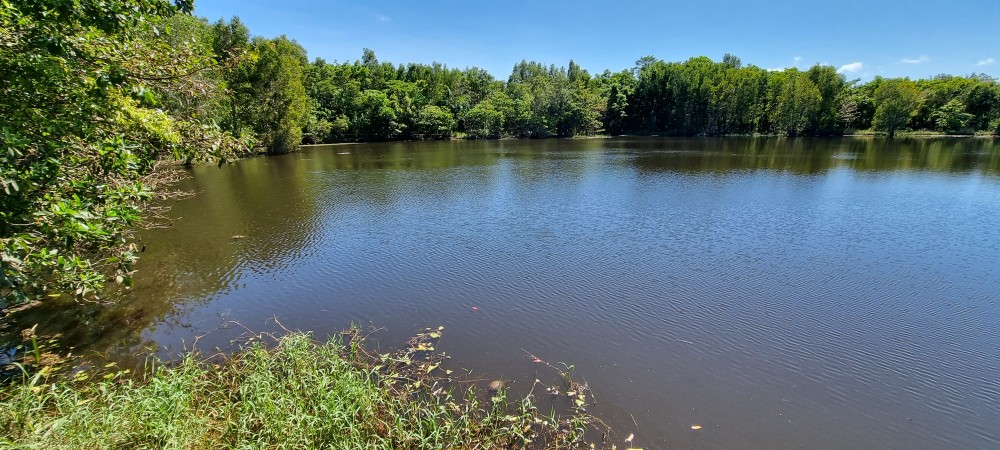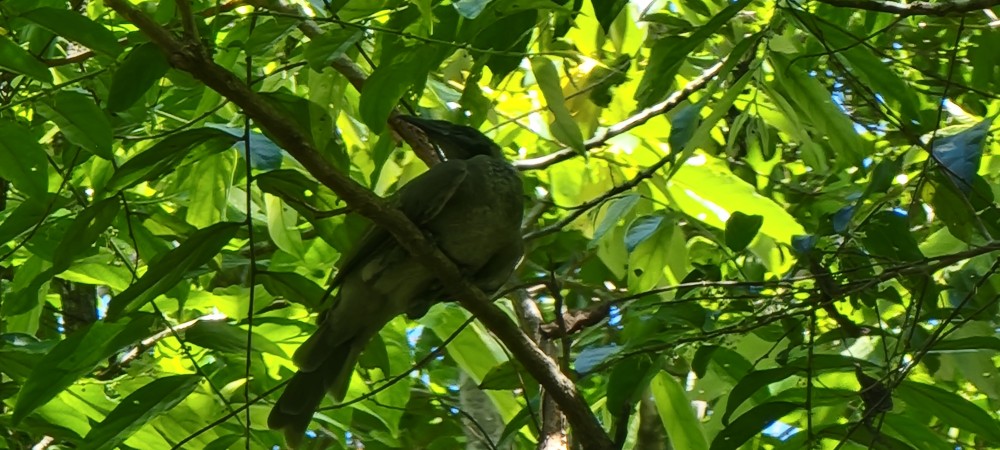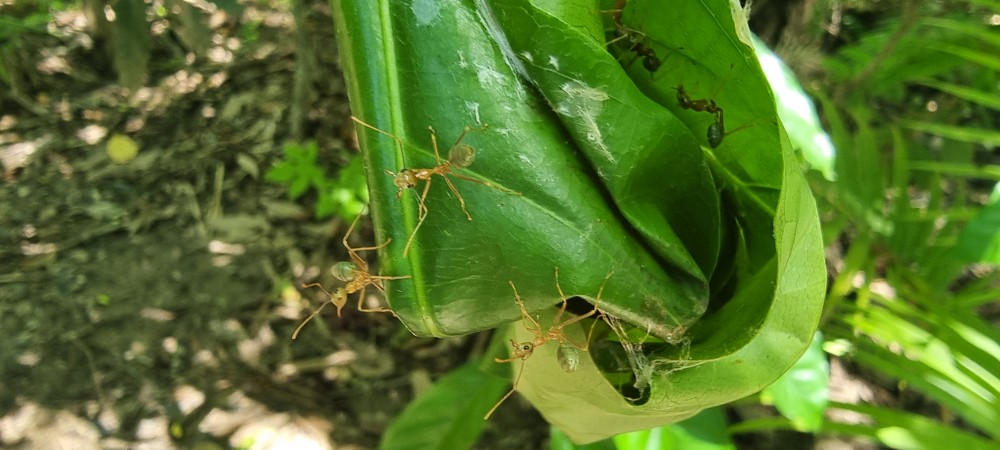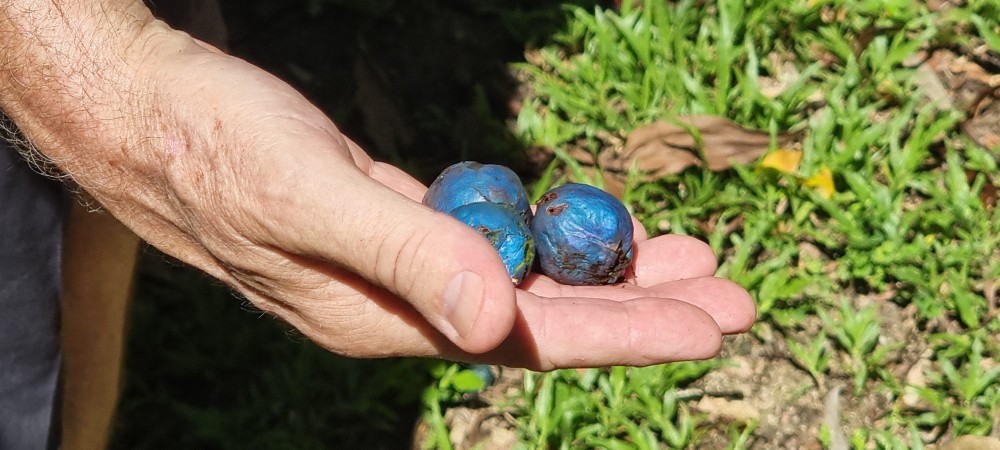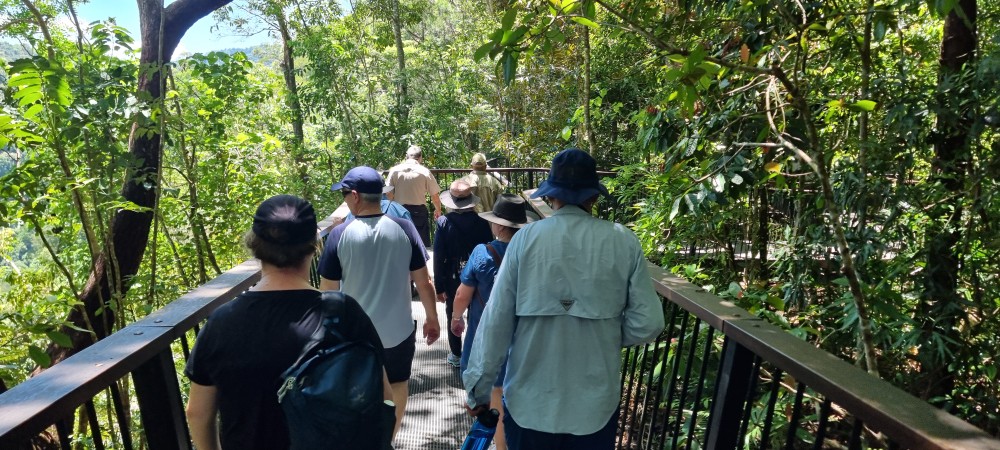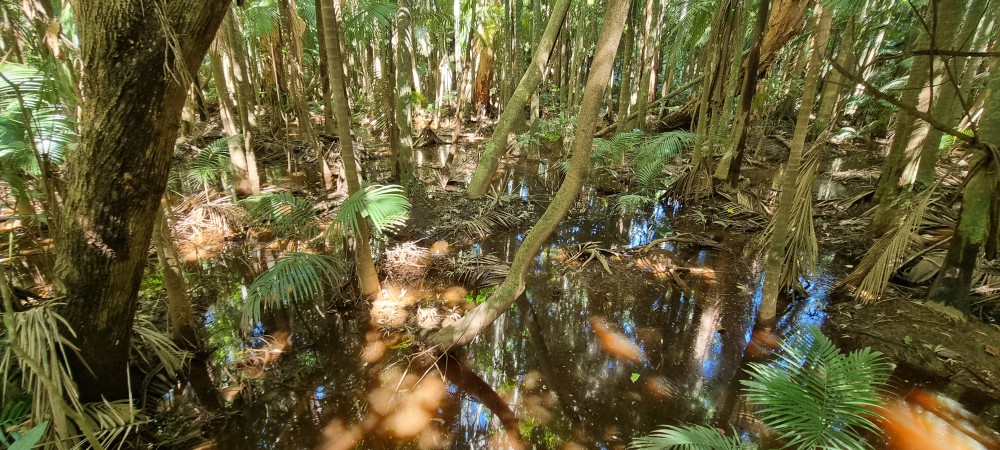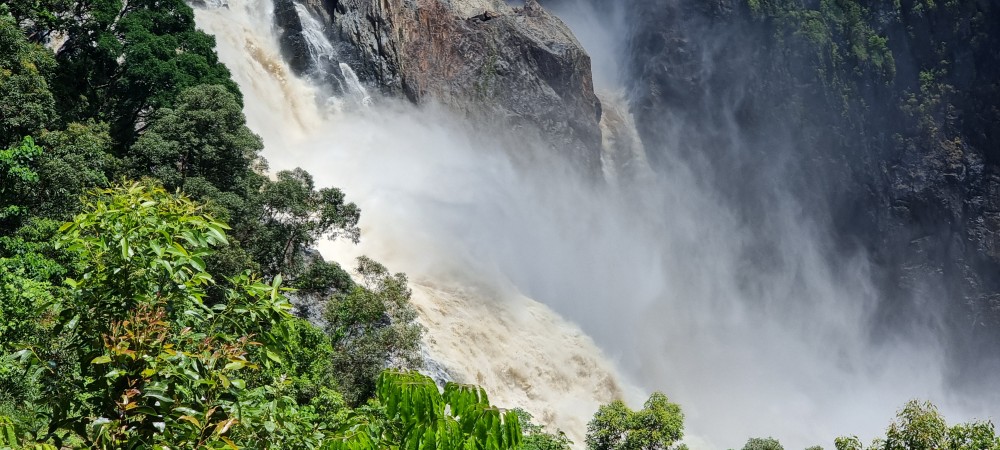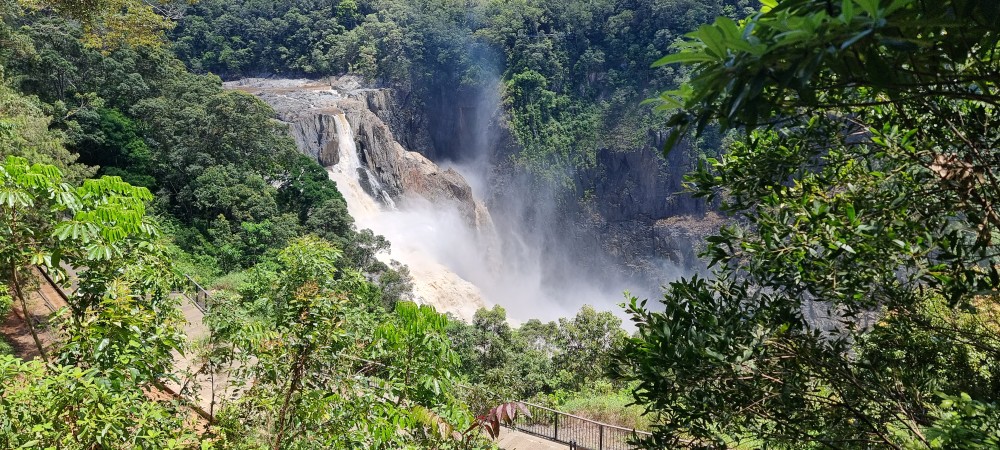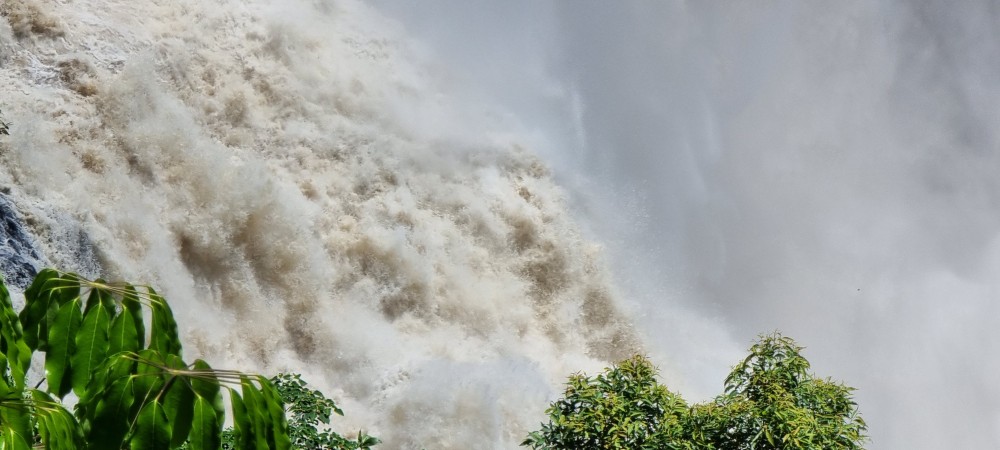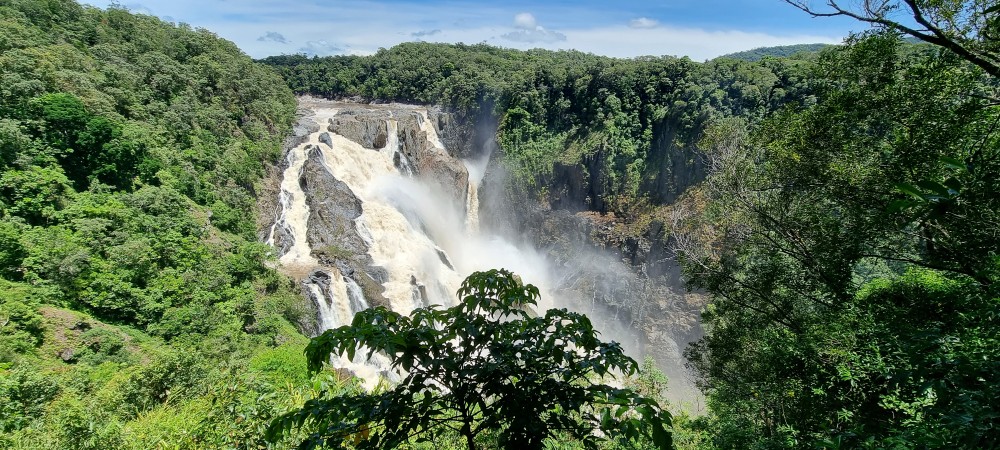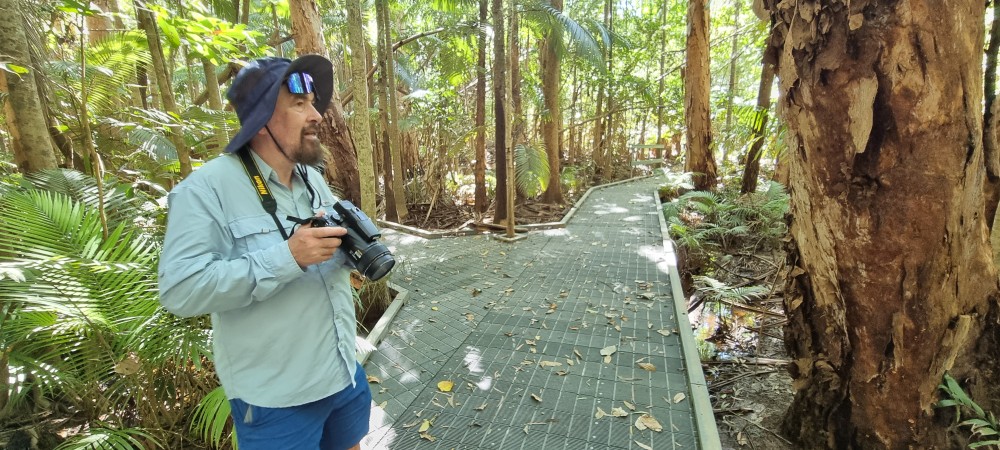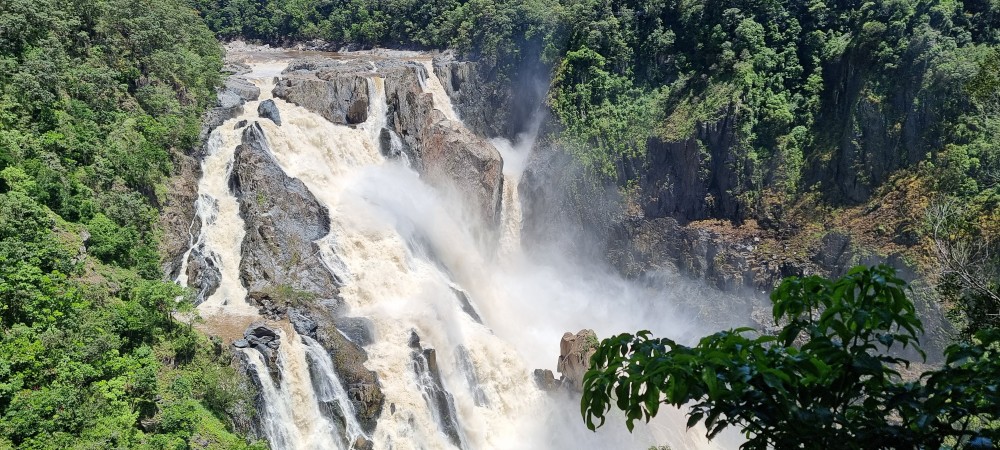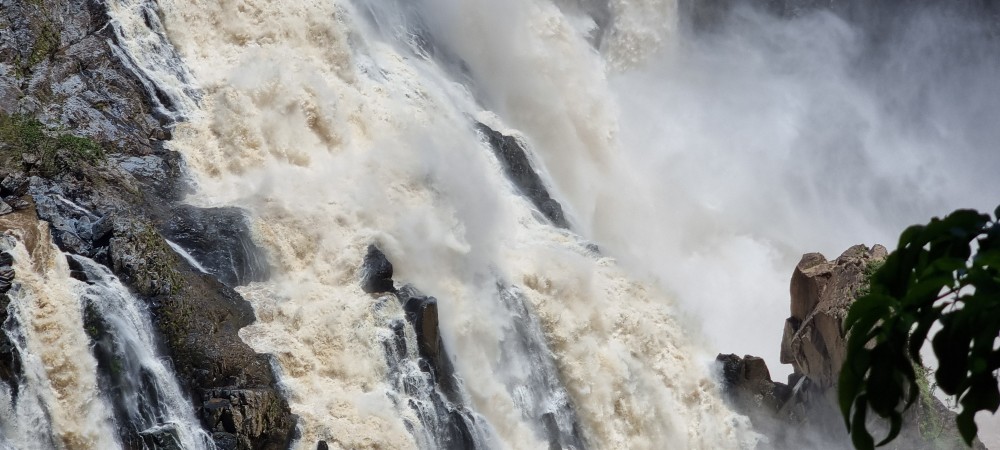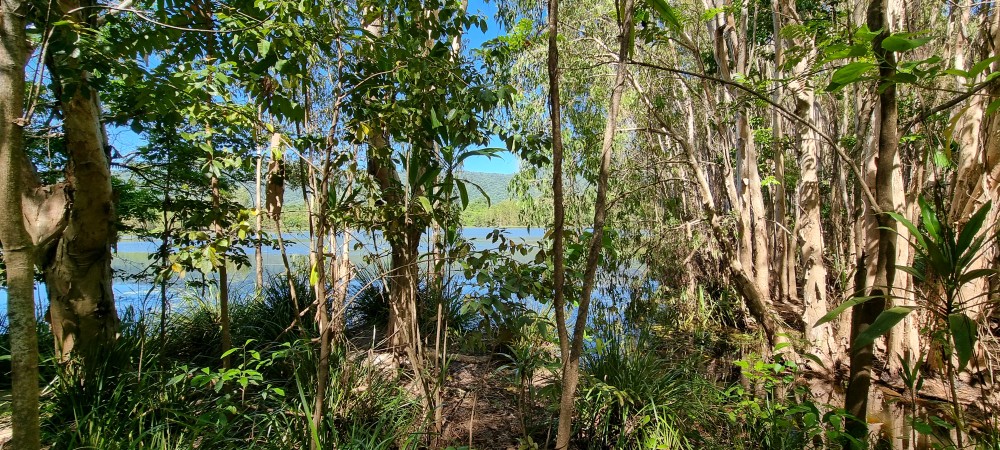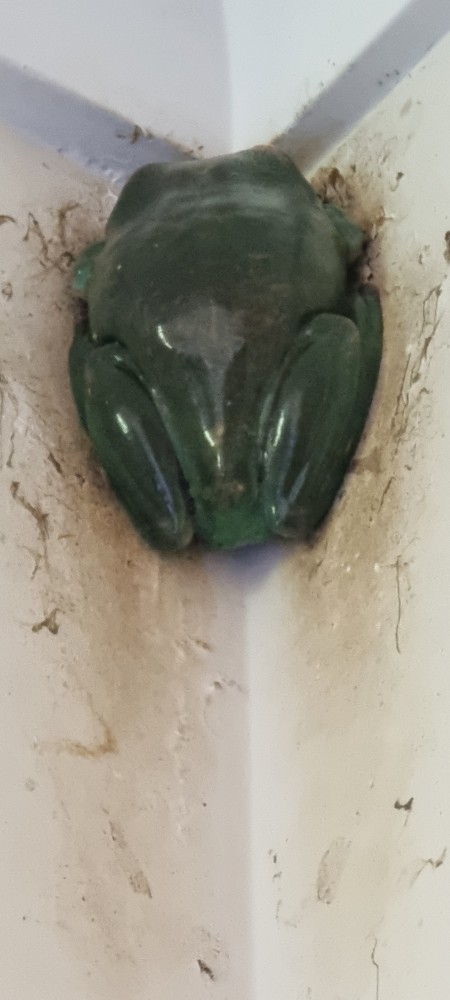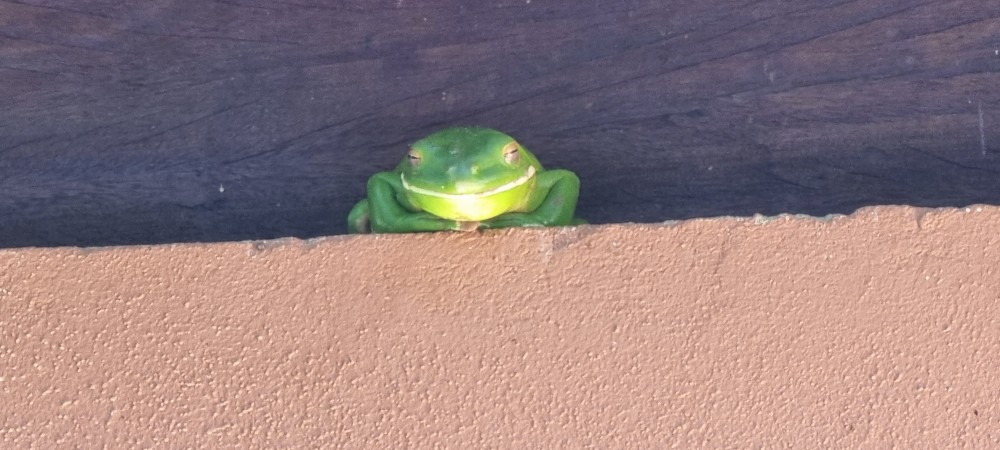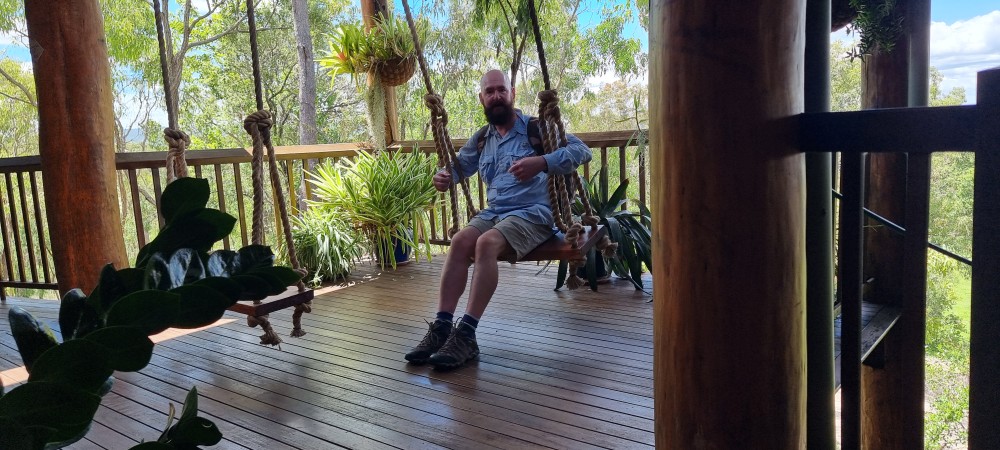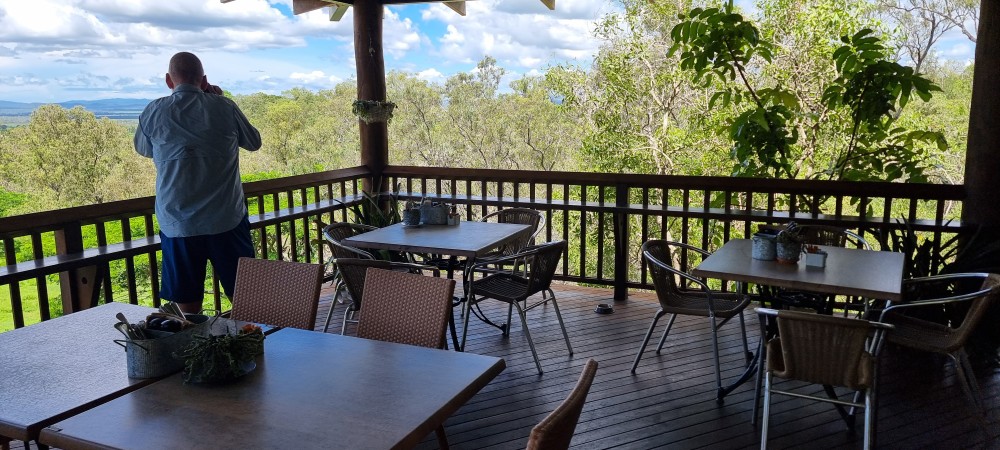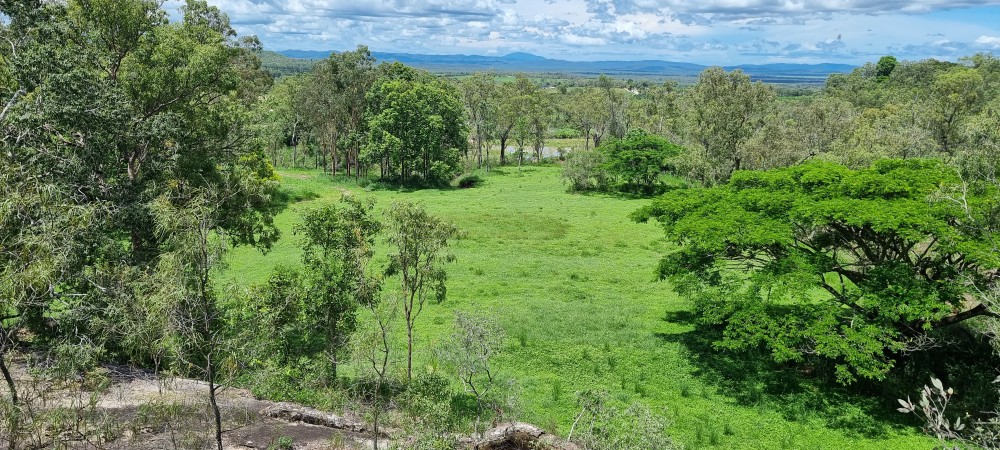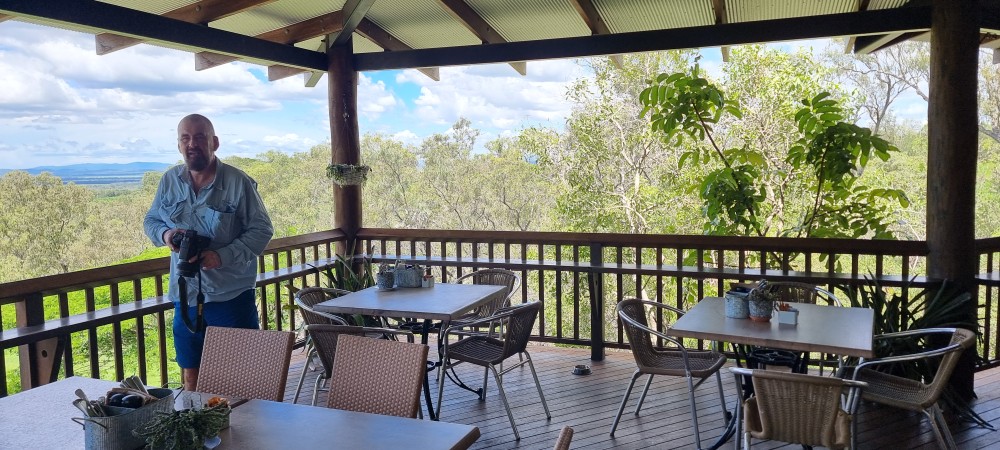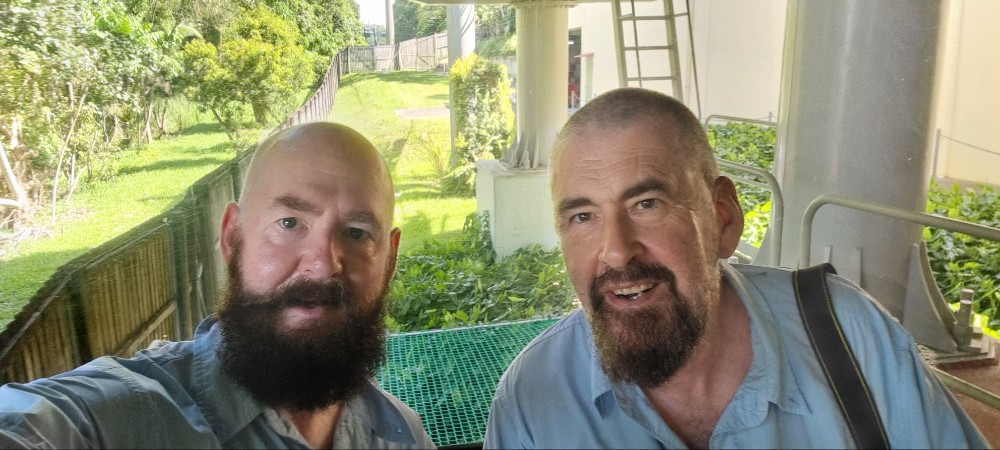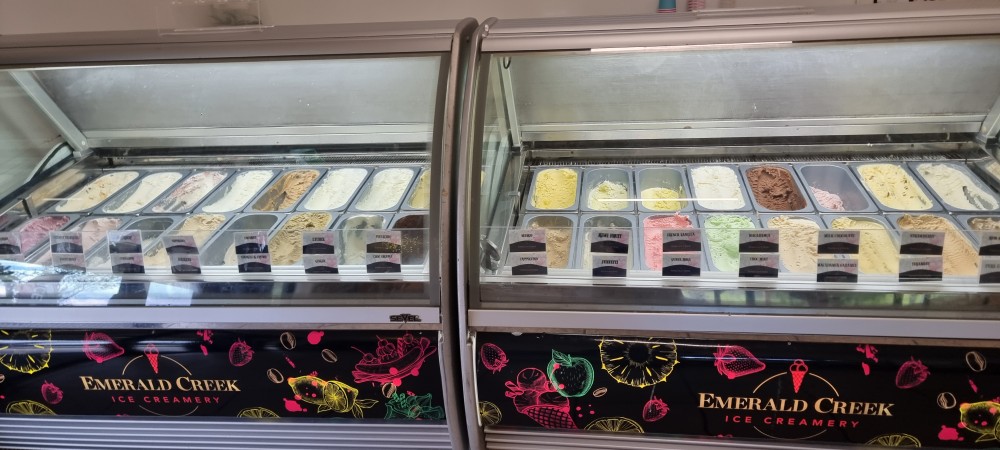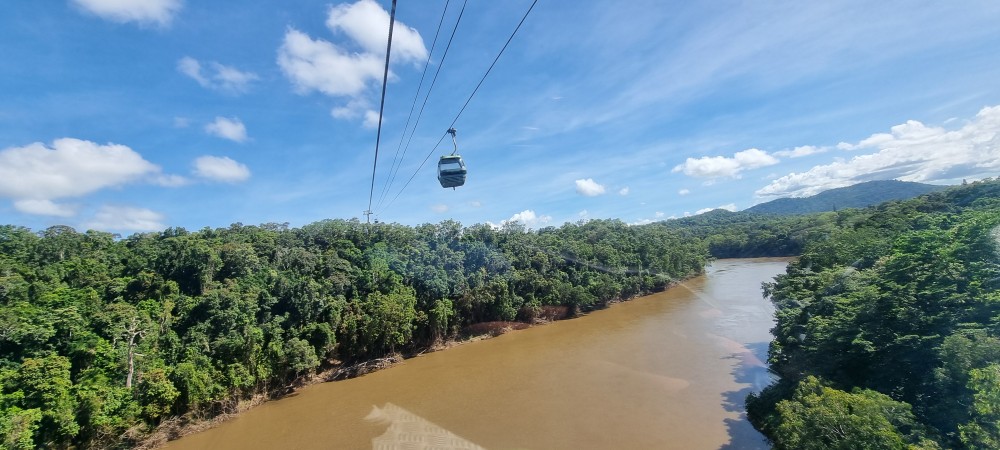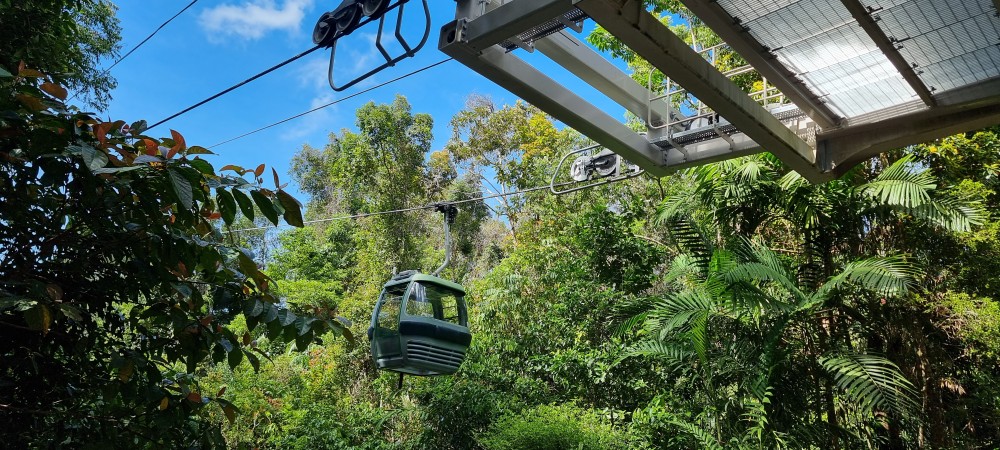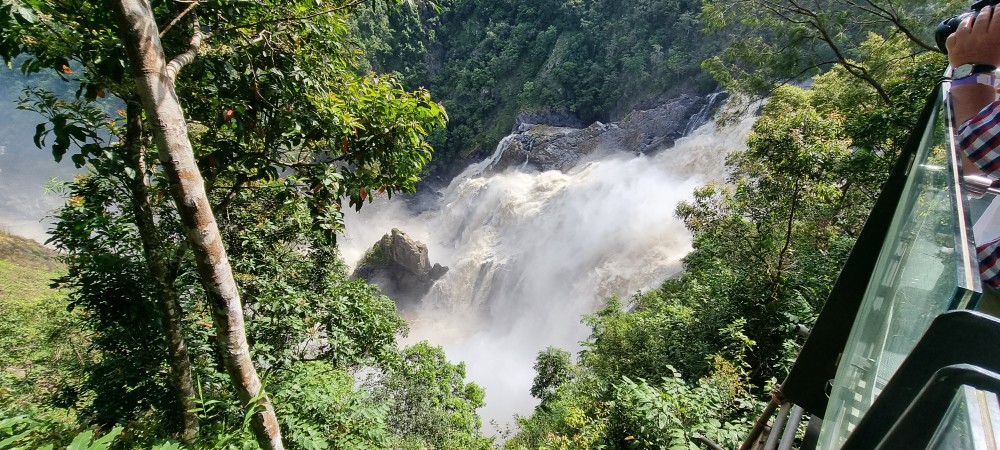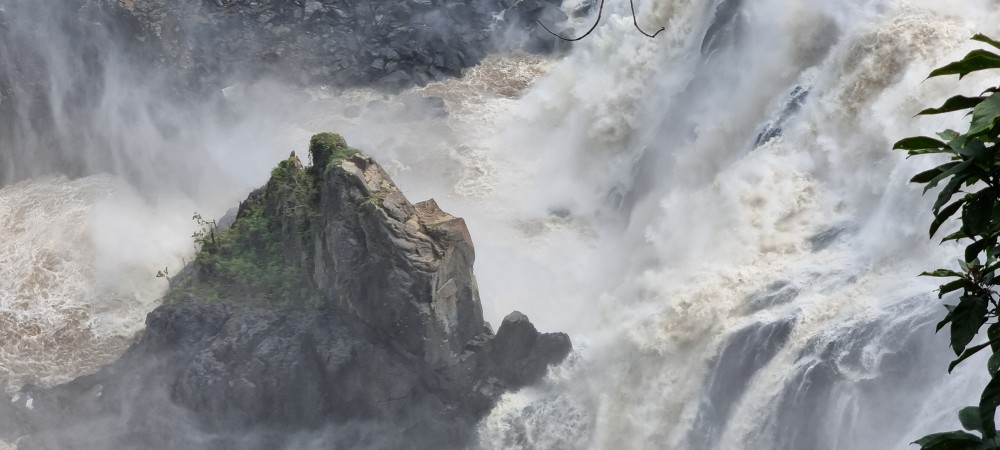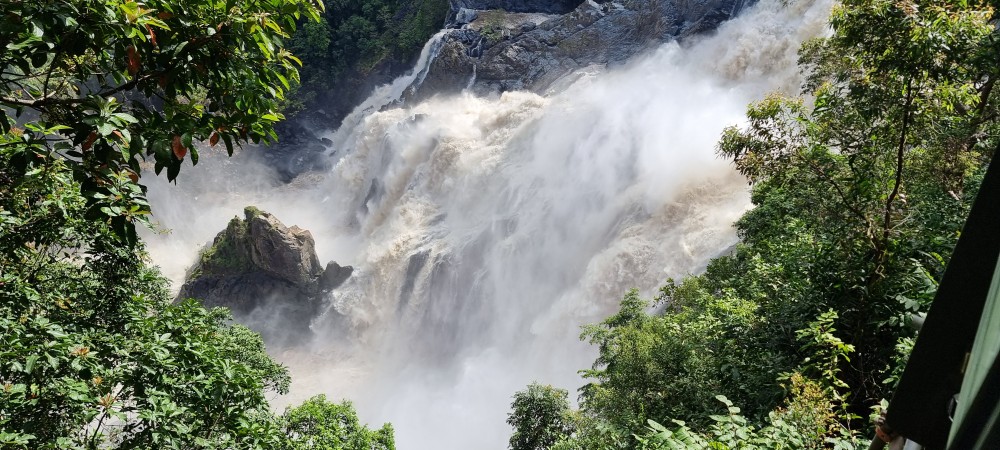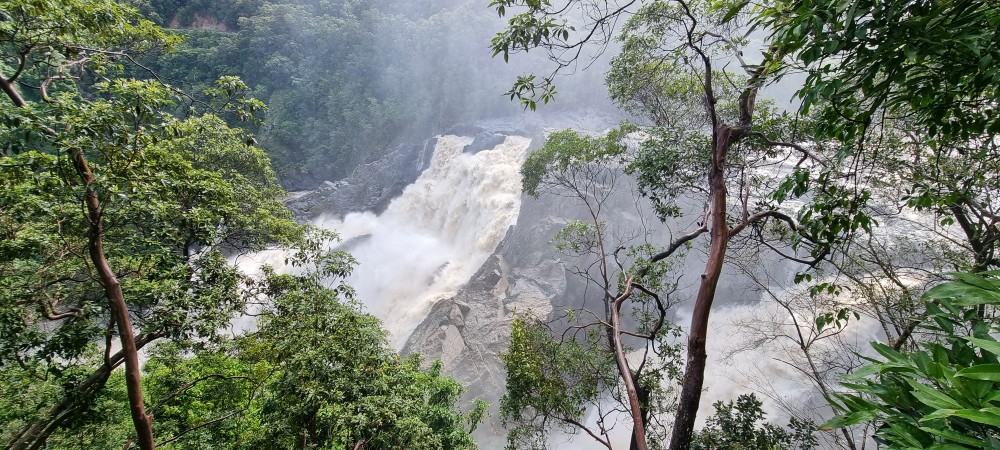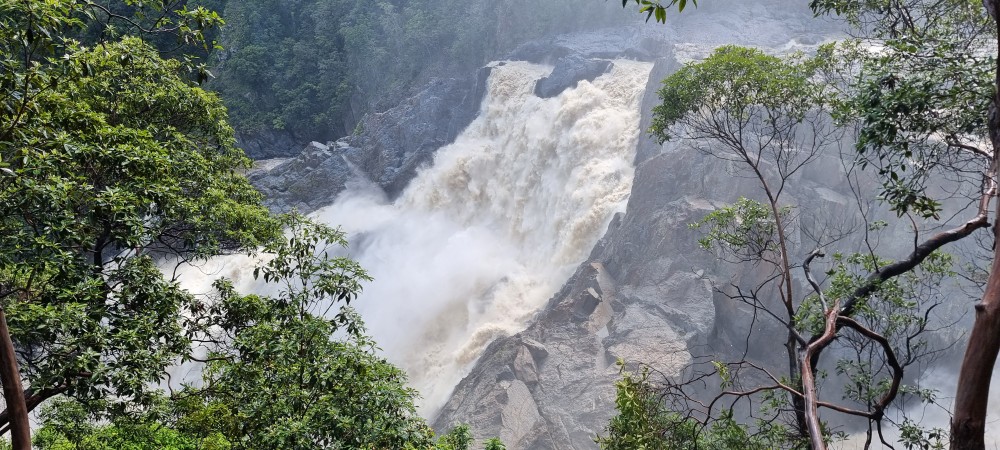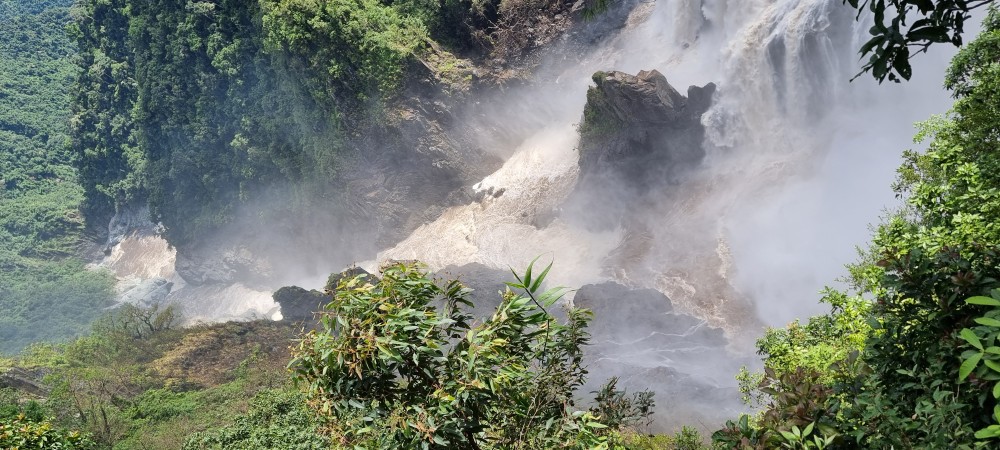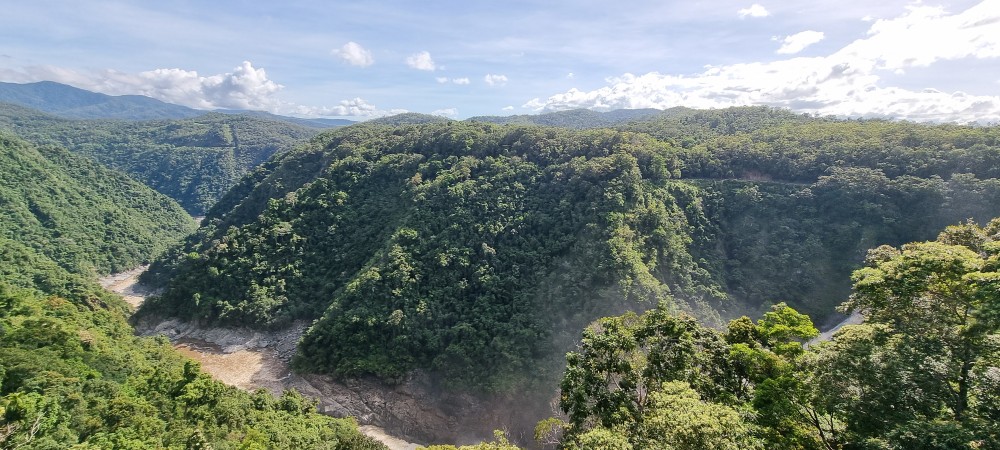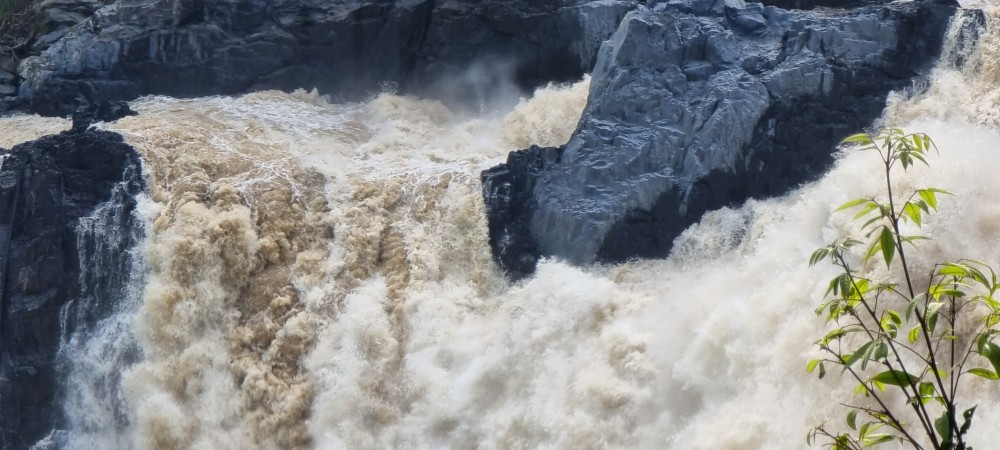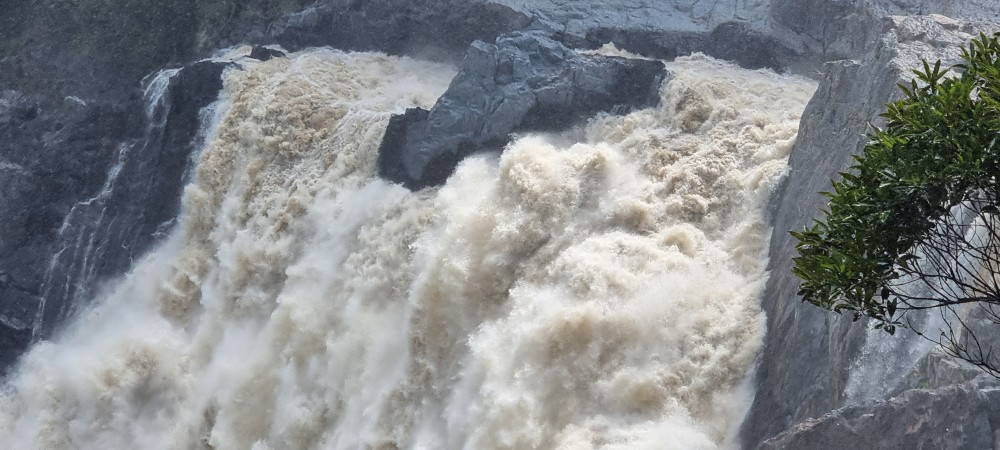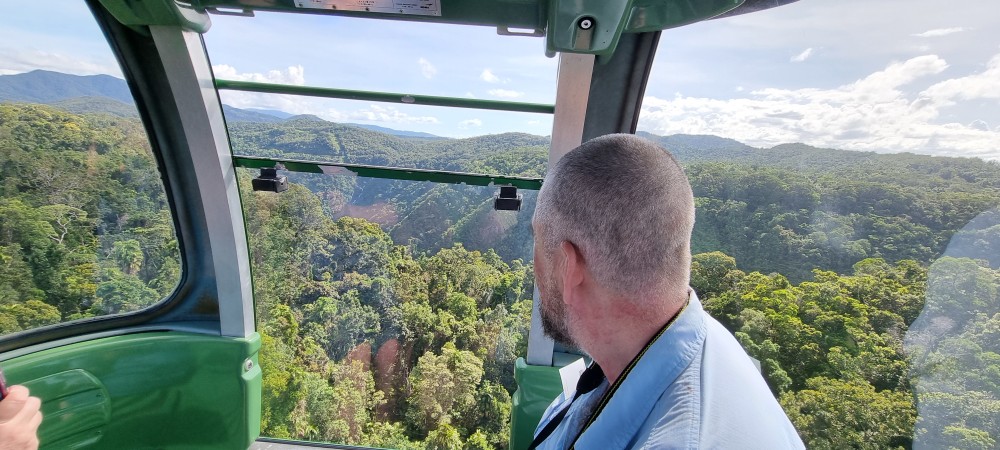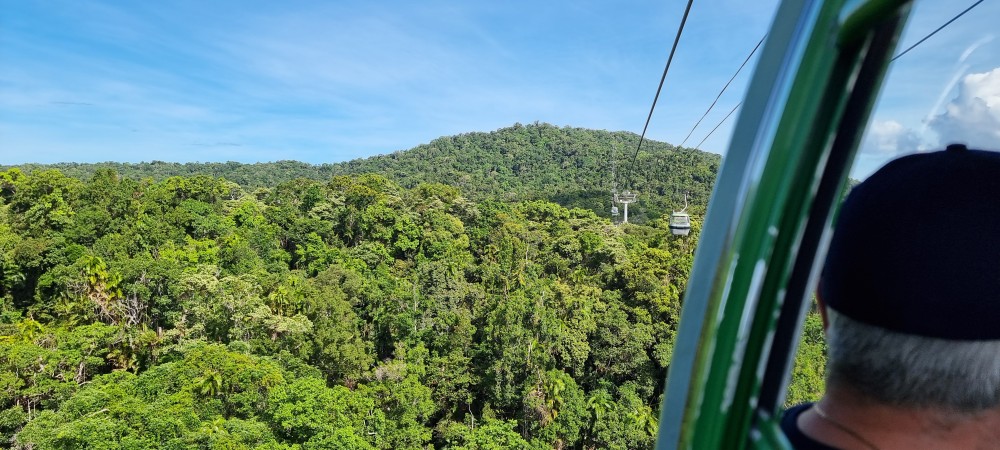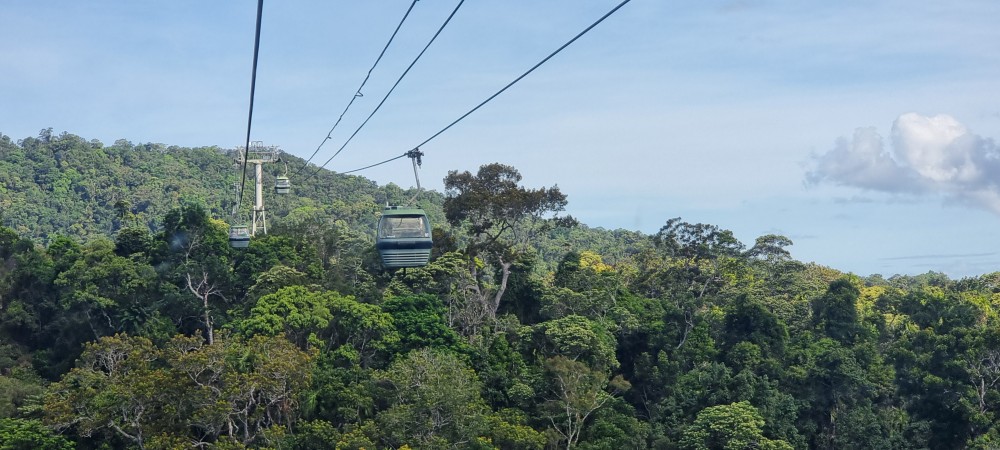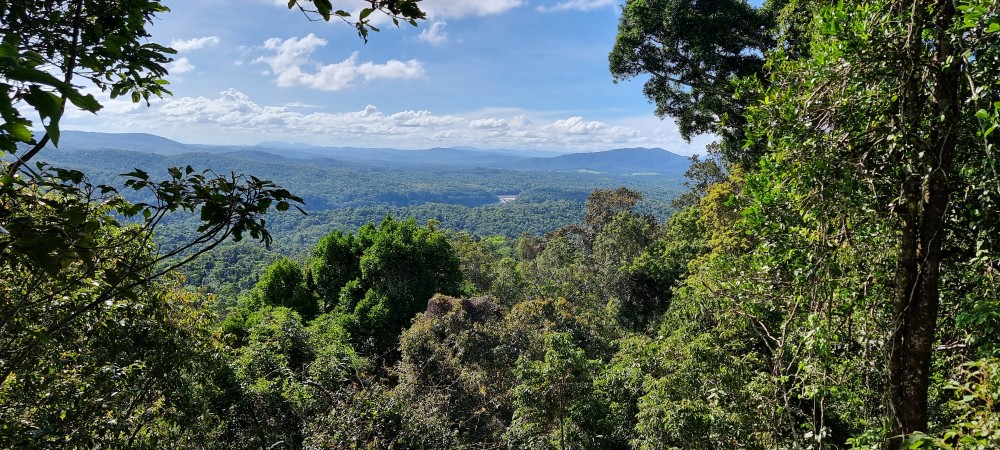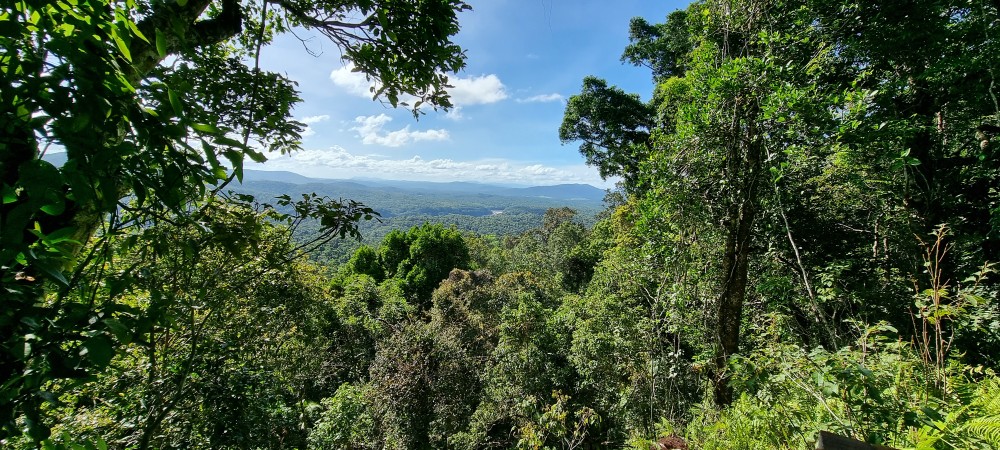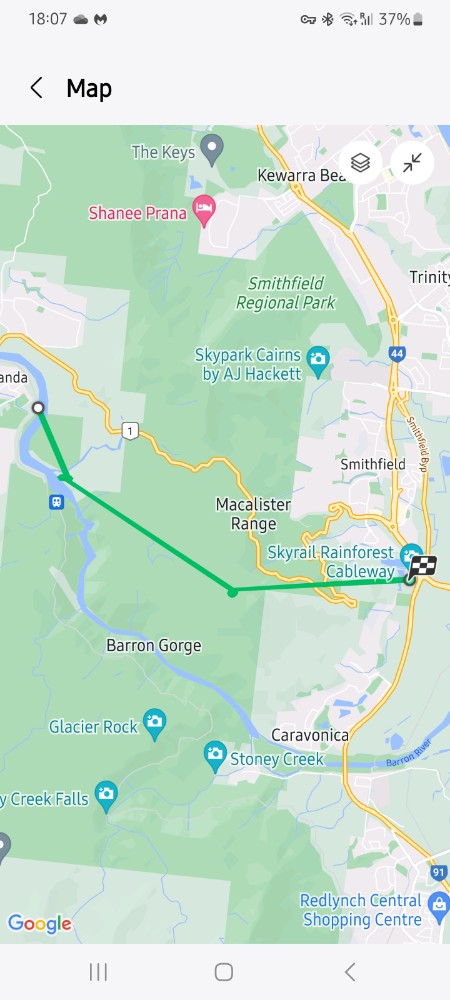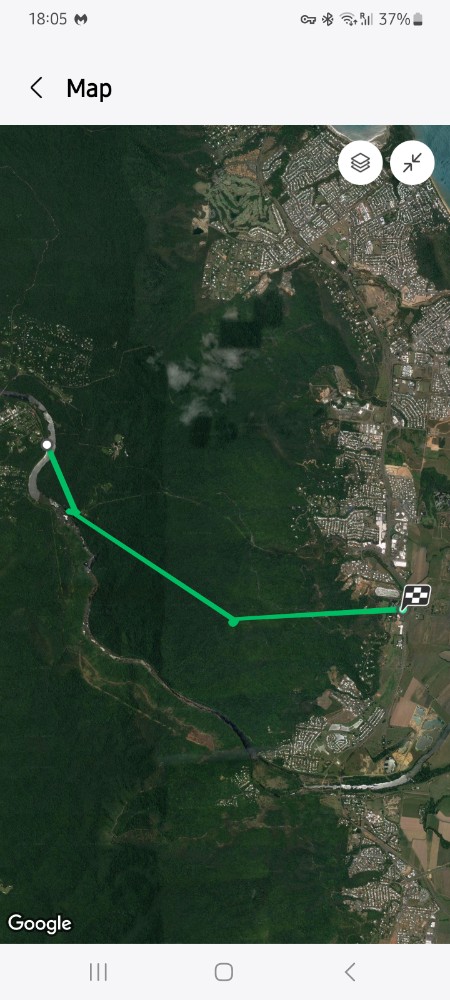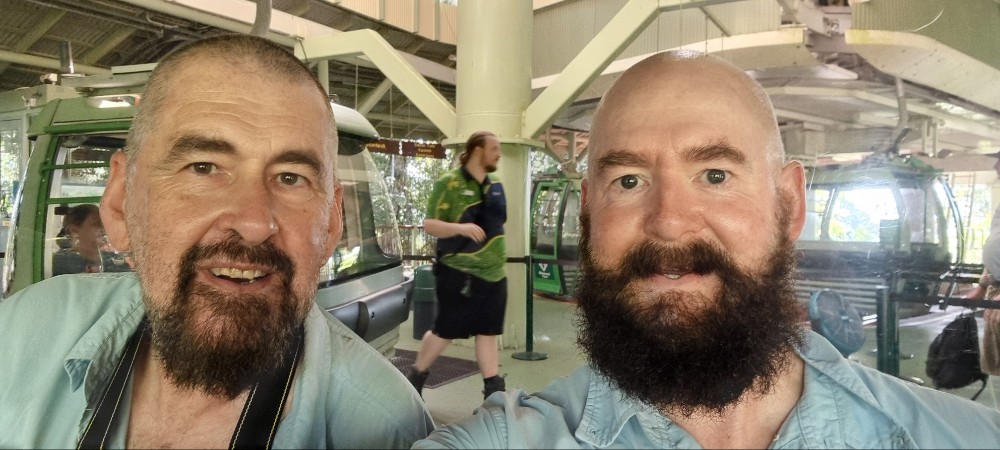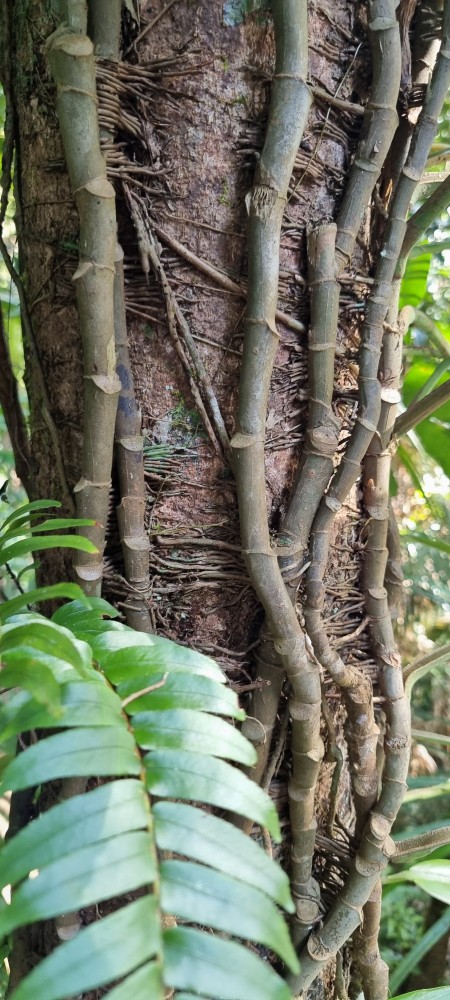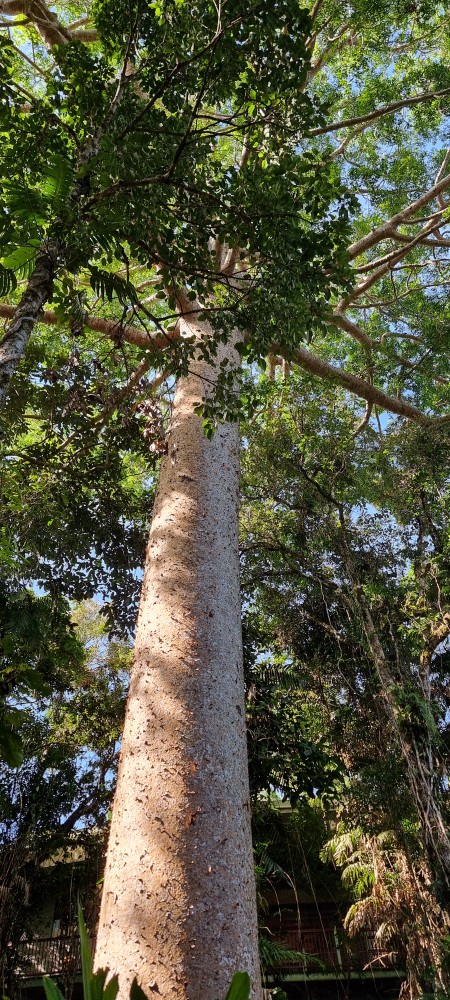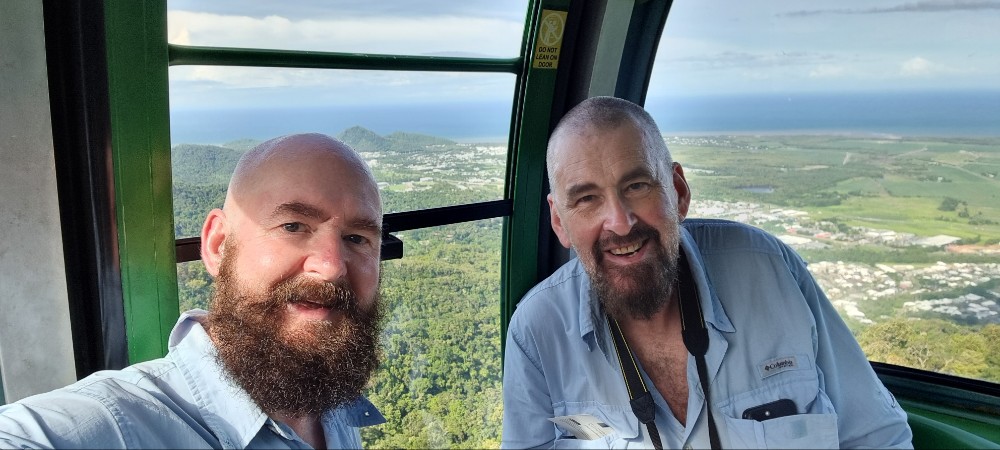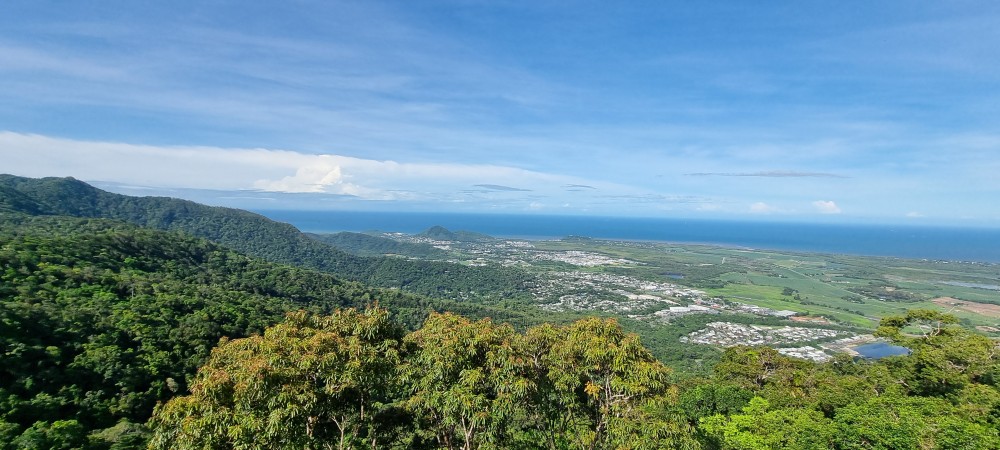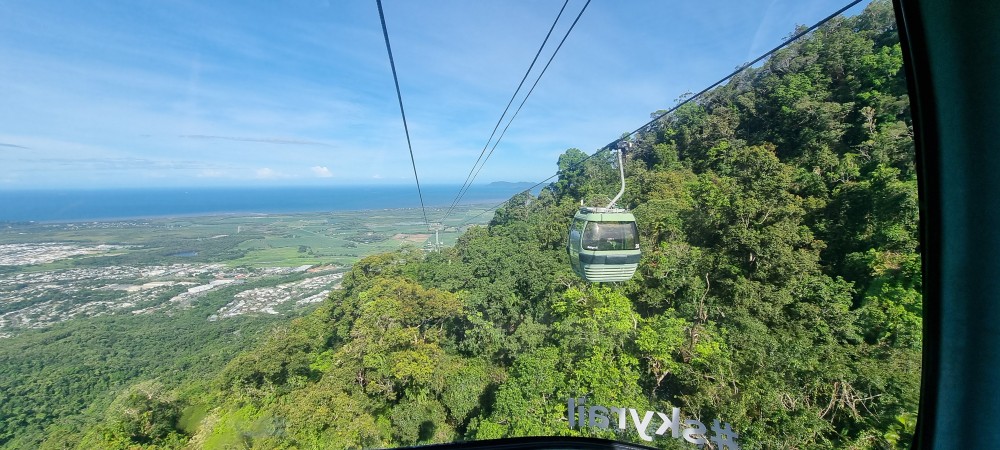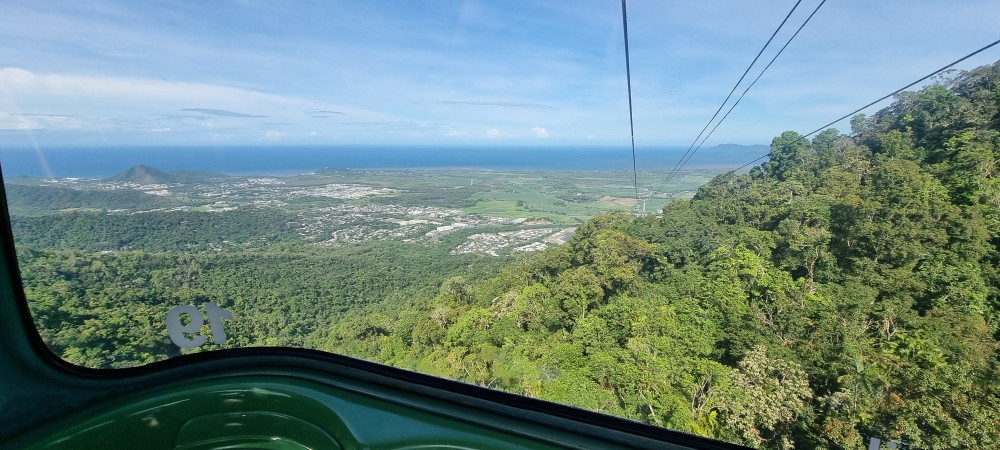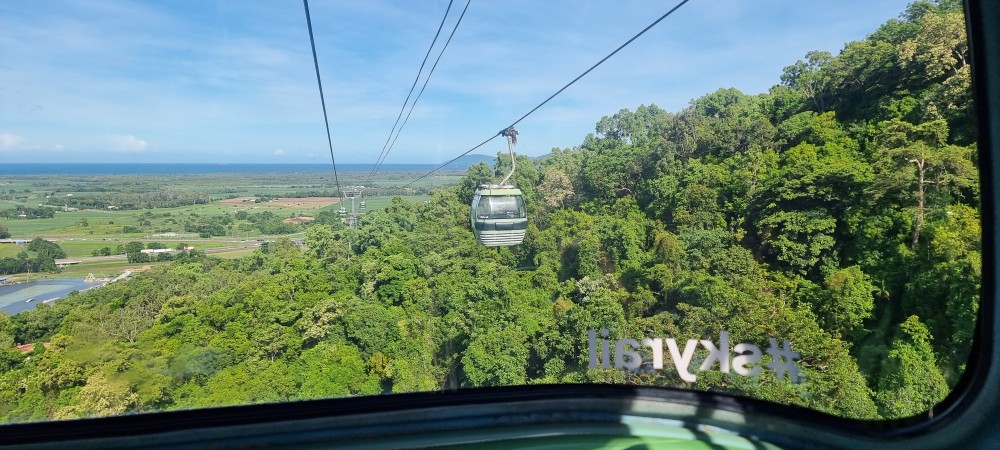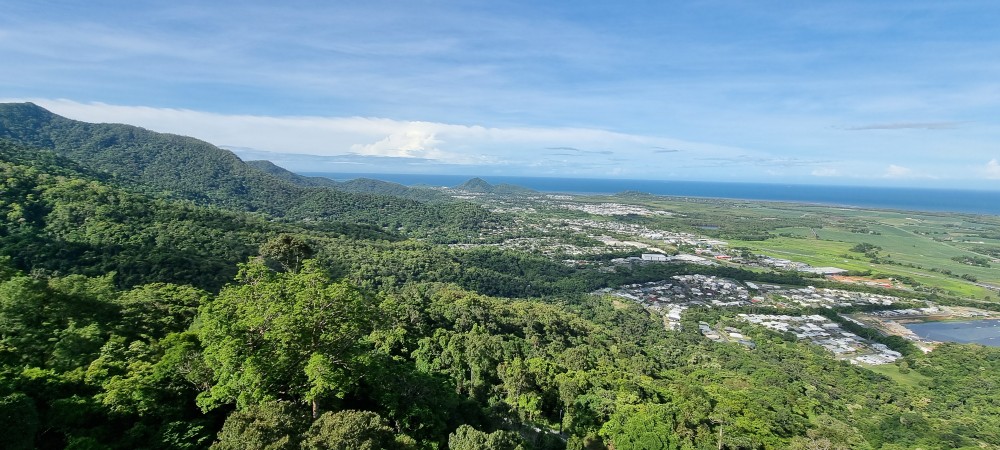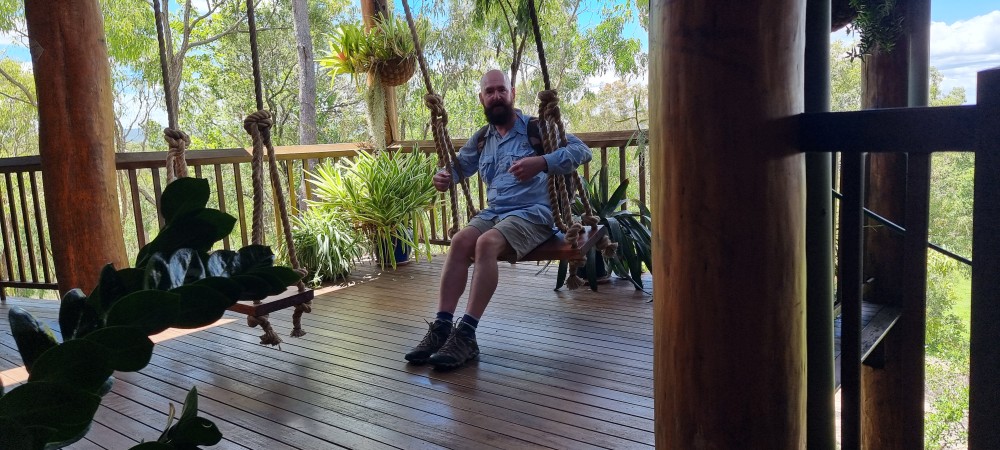Today we were doing a tour out of Cairns. Since the devastating cyclone and floods in December the tour operators have had to rearrange their tours as many places are still inaccessible. Indeed within 20 minutes we were travelling on a road which would have been impassable 2 weeks ago. Our first stop took us into the Cattana wetlands for a guided walk through the heart of a remnant feather palm forest. We were grated with a sign advising of the sighting of a crocodile within the last week, however this wasn’t a concern to us as the bigger problem was the very aggressive mosquito, .and we will carry the scars for the next few days. We saw a kookaburra, Jesus birds, so called because they appear to walk on water as well as butcher birds which kill other birds, then hang the carcasses from the trees, returning days later to eat them. we also saw a termite nest which a bird had used to lay its eggs, the parent bird could then abandon the eggs because the heat from the termite nest would hatch them. Similarly there were mound of decaying vegetation which birds would use in the same way.
From here we took a winding mountain road, the Kaunda range Road which was taking us into the world’s oldest continually evolving rain forest (older even than the Amazon), seeing more evidence of the damage caused by the recent flood along the way. We stopped to be met by a Djabugay Aboriginal guide who took us to stand on a bridge and the welcomed us by participating in “Calling to the Country” a ceremonial introducing yourself to the country and the ancestral spirits. We were presented with quartz stones and told to take one, rub it between our hand and under our armpits and then throw it into the water below, the idea being that the ancestors would recognise us by our scent if we return. He then took us to the Barron Falls which he knows by the local name Din Din (waterfall). The water fall holds profound significance to the Djabugay people and he told us the story of the creation of the falls and we then proceeded along a series of walkways to get increasingly dramatic views of the falls.
After saying goodbye to our Aboriginal guide we continued on our way with our driver , passing through small outback towns and largely agricultural land (good volcanic soil) which once was used for growing tobacco, but is now used for avocados, mangoes, papaya and macedemia nuts. We had lunch at the Skyberry coffee plantation which is Australias oldest. It is also the largest producer of papaya, although production is currently down by 50% as a result of the devastation caused by the storm. After lunch they described the process for coffee production. After lunch we retraced our steps seeing more kangaroos on a golf course and stopped for an afternoon visit to the Emerald Creek Ice Creamery where we were given a tub with 4 different flavours of ice cream and sorbets (Mango, papaya,tangerine and lychee).
Our final visit of the day was to the Skyrail Rainforest Cableway, a 4.5 mile long cable car riding over the top of the rainforest. There were two stops along the way, one for a different view of the Barron Falls and Barron river, the other a walkway through the forest.
